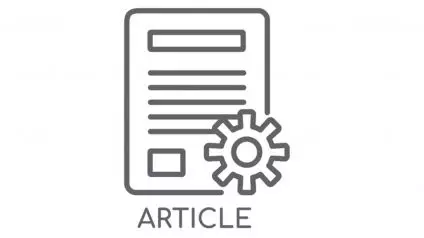An international team of researchers led by scientists from the University of California San Diego School of Medicine and Moores Cancer Center explain how pancreatic cancer cells use an alternative method to find essential nutrients, defying current therapies, to help them develop and spread in new findings published online March 18, 2021 in the journal Cancer Cell.
Pancreatic cancer makes up about 3% of all cancers in the United States, but it is one of the most aggressive and lethal, accounting for 7% of all cancer deaths per year. Pancreatic cancer is particularly deadly after it has spread, with survival rates dropping from 37 percent to just 3 percent after five years.
A constant supply of nutrients is needed by all cancer cells. Some cancers accomplish this by forming their own vascular networks to draw nutrients from the blood supply of the host. Other cancers, such as pancreatic ductal adenocarcinoma, are surrounded by a thick layer of connective tissue and extracellular molecules (the so-called tumor stroma), which serves not only as a dividing line between malignant cells and normal host tissues, but also as a barrier to cancer cells receiving adequate resources, such as blood supply.
As a result, pancreatic and other nutritionally stressed cancers use a variety of adaptive mechanisms to escape starvation death, which is particularly dangerous in rapidly growing tumors. Autophagy, or self-eating, is one such mechanism. Autophagy enables nutritionally stressed cancers to digest intracellular proteins, especially denatured or damaged proteins, and use the free amino acid building blocks as an energy source to power their metabolism.
Since autophagy is increased in pancreatic cancer, previous studies indicated that inhibiting self-eating could be used to starve tumors. However, according to Michael Karin, Ph.D., Distinguished Professor of Pharmacology and Pathology at UC San Diego School of Medicine, several clinical trials using compounds that inhibit autophagic protein degradation in combination with conventional chemotherapy did not yield any additional therapeutic benefit compared to chemotherapy alone.
Hua Su, Ph.D., a postdoctoral fellow in Karin’s lab and the study’s first author, and colleagues investigated why pancreatic cancers survive autophagy and, in fact, tend to thrive in the new study. They discovered that inhibiting autophagy caused rapid upregulation or increased activity of a different nutrient procurement pathway known as macropinocytosis, which comes from the Greek for “large drinking or gulping.”
Macropinocytosis allows cancer cells that are autophagy-deficient or nutritionally stressed to take up exogenous proteins (proteins from outside the cell), digest them, and use their amino acids for energy production.“These results provide another example of the plastic nature of pancreatic cancer metabolism,†said senior author Karin. “It also shows that combined inhibition of the two major nutrient procurement pathways can result in a successful blockade of energy supply resulting in tumor starvation and consequent shrinkage.â€
The new results, according to study co-author Andrew Lowy, MD, chief of the Division of Surgical Oncology at Moores Cancer Center at UC San Diego Health and a professor of surgery at UC San Diego School of Medicine, indicate that targeting tumor metabolism as a treatment strategy has potential, but that success would likely involve combining multiple agents for multiple targets.
“I believe that these findings are exciting and support the idea that we will make significant impact against this very difficult disease in the near-future,†Lowy said.
Co-authors include: Fei Yang, Rao Fu, Xiaohong Pu, and Beicheng Sun, Nanjing University Medical School; Xin Li and Yinling Hu, National Cancer Institute; Randall French, Evangeline Mose, Brittney Trinh, Junlai Liu, Laura Antonucci, Yuan Liu, Avi Kumar, and Christian M. Metallo, UC San Diego; Jelena Todoric, UC San Diego and Medical University of Vienna; Maria Diaz-Meco and Jorge Moscat, Weill Cornell Medicine.

